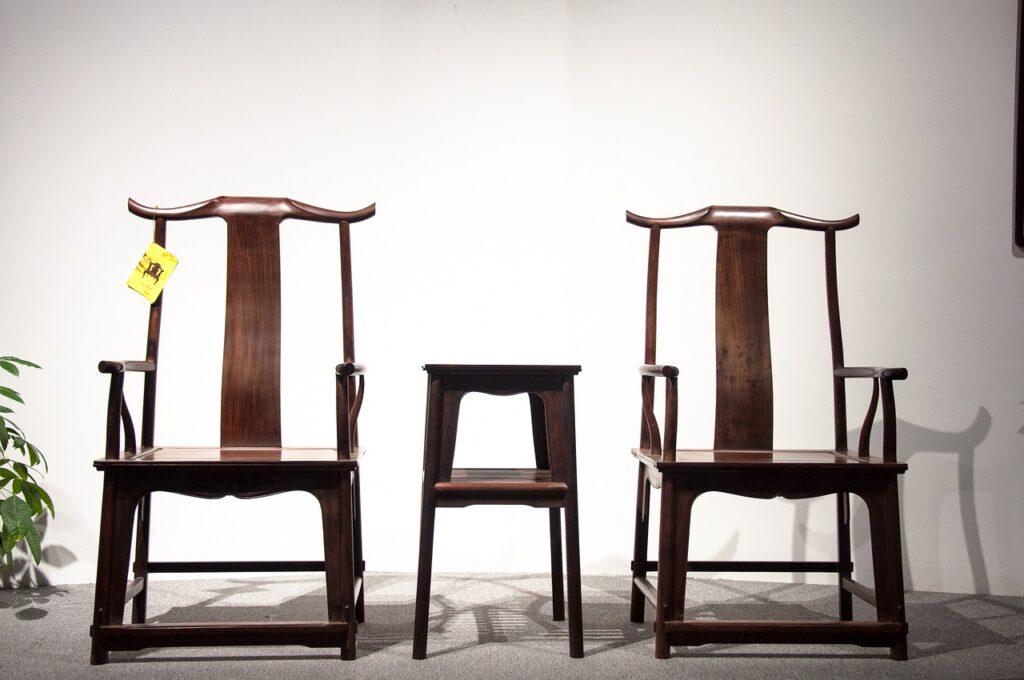Mahogany Meaning, Define and Symbolism

Isn’t it intriguing how nature’s creations can symbolize profound meanings? Think about the mahogany tree, standing tall with its opulent, reddish-brown wood. You’ve likely come across mahogany desks, maybe even sat at one, but have you ever pondered its deeper symbolism? Let’s dive in!
A Glimpse into the Mahogany Tree: An Introduction
The mahogany tree is not just another tree in the forest; it stands out for a multitude of reasons, which make it both unique and desirable. Let’s delve deeper into what makes this tree so special:
- Appearance and Structure:
- Majestic Stature: Mahogany trees can reach impressive heights, sometimes towering over 150 feet.
- Distinctive Bark: Its bark is smooth, with a greyish-brown hue that occasionally flakes off, revealing a pinkish underbark.
- Luxurious Leaves: The tree sports large, hand-shaped leaves that can span up to 20 inches across, giving it a dense canopy.
- Location and Growth:
- Tropical Affinity: Native to the tropical regions of Central and South America, mahogany thrives in rainforests.
- Growth Pattern: These trees have a penchant for sunlight, often growing straight up in search of the sun, which results in their notably straight trunk.
- Uses and Applications:
- Timber Treasure: Being a hardwood, mahogany is incredibly resistant to wear, making it a top choice for furniture.
- Musical Marvel: Its resonant quality makes mahogany wood a favorite for musical instruments, especially guitars and violins.
- Boat Building: Because of its resistance to rot and durability, mahogany is also prized in boat construction.
- Cultural Significance:
- Symbol of Strength: In various cultures, the mahogany tree and its wood are symbols of strength, endurance, and longevity.
- Economic Importance: Given its high demand in the furniture and construction industry, mahogany plays a pivotal role in local economies, especially in areas where it is indigenous.
The multifaceted nature of the mahogany tree, from its impressive physical attributes to its myriad uses, makes it a noteworthy and cherished entity in both nature and culture. It’s not just about mahogany tree meaning; it’s about appreciating the intricate tapestry of nature where such wonders thrive.
Delving Deep into the Mahogany Meaning
To truly grasp the essence of mahogany, we need to understand its many layers of significance. This tree and its wood have been revered, not just for their physical attributes, but for the deeper meanings they carry. Here’s a detailed exploration:
- Physical Attributes:
- Rare Elegance: The reddish-brown hue of mahogany timber, with its straight grain, exudes a classic elegance that is hard to rival.
- Durability’s Symbol: Its tough nature, resistance to pests, and decay make mahogany synonymous with longevity and resilience.
- Symbolic Interpretations:
- Authority and Wisdom: Ponder on the mahogany desk meaning; desks made from this wood are often seen in offices of high-ranking officials, suggesting authority and respect.
- Timelessness: Furniture pieces, especially antiques made from mahogany, are passed down through generations, embodying stories, histories, and legacies.
- Quality and Exclusivity: The very meaning mahogany gives off resonates with luxury and top-notch quality. It’s not just any wood; it’s a statement.
- Emotional and Psychological Connotations:
- Economic and Social Impact:
- Economic Pillar: In areas where mahogany trees are native, the timber industry is a crucial part of the economy, providing jobs and promoting trade.
- Cultural Presence: Mahogany has found its way into art, literature, and everyday conversations, showcasing its cultural and social significance.
Diving into the world of mahogany is like unveiling layers of a story. From a simple piece of furniture to a symbol of societal stature, its meanings are vast and varied. When one talks of mahogany define, it’s essential to see it not just as wood but as an emblem of many virtues and values.
Symbolic Significance of Mahogany Wood
When we delve into the world of symbolism, we often find that even the most mundane objects or entities can carry profound meanings. Mahogany, despite being a tangible material, is wrapped in layers of symbolism that make it an emblem of various virtues and narratives. Let’s explore these symbolic associations more deeply:
- Historical Associations:
- Craftsmanship’s Gold Standard: From centuries past, mahogany has been the chosen material for master craftsmen, indicating its association with excellence and mastery.
- Heirlooms and Legacy: Many antique pieces, which are passed down through generations, are crafted from mahogany, signaling its connection with family history and legacy.
- Royal Preference: In various eras, mahogany was the wood of choice for royal furniture and artifacts, linking it with nobility and prestige.
- Qualitative Connotations:
- Strength and Durability: Just as oak is seen as robust, mahogany’s hard nature makes it a symbol for strength and resilience.
- Refinement and Luxury: The deep, reddish-brown of mahogany speaks of opulence, making it a metaphor for luxury and sophistication. This mahogany symbolism isn’t merely about its appearance, but also its tactile richness.
- Purity and Authenticity: Unlike many woods that might need treatments or finishes, mahogany boasts a natural sheen and quality, symbolizing purity and authenticity.
- Emotional Resonances:
- Comfort and Warmth: Picture a mahogany living room; the thought likely brings feelings of warmth, comfort, and a sense of belonging.
- Safety and Protection: Given its sturdiness, mahogany wood items, be it doors or furniture, are often seen as protective barriers.
- Cultural and Spiritual Ties:
- Sacred Essence: In certain cultures, mahogany trees are considered sacred and are believed to possess spiritual powers.
- Economic and Trade Symbol: Beyond its personal and home use, mahogany has played a pivotal role in trade between nations, symbolizing economic power and collaboration.
Mahogany’s symbolism extends far beyond its physical attributes. Whether seen through the lens of history, quality, emotion, or cultural significance, mahogany stands as a testament to the rich tapestry of meanings objects can hold in human culture and psyche.
The Cultural Nuances: Mahogany Wood in Hindi and Beyond
The allure of mahogany is not limited to its physical attributes or its general symbolic connotations. As we venture across different cultural landscapes, we discover that this wood’s significance takes on unique dimensions. Here’s an exploration into how various cultures perceive mahogany and the intricate nuances associated with it:
- Indian Context:
- Exotic Appeal: In the vast subcontinent of India, mahogany is often viewed as an exotic wood, given its non-native origins. When we refer to “mahogany wood in Hindi”, the term often resonates with luxury and foreign elegance.
- Craftsmanship and Artistry: Indian artisans, known for their intricate woodwork, prize mahogany for its workability and the finesse it brings to handcrafted items.
- Spiritual Connection: India, with its rich tapestry of beliefs, often associates trees with spiritual significance. While mahogany might not have indigenous religious ties, its grandeur and strength find resonance in local spiritual narratives.
- African Insight:
- Resource Wealth: In parts of West Africa, where mahogany is indigenous, it stands as a testament to the region’s natural wealth.
- Tales and Folklore: Stories passed down generations often feature majestic trees, with mahogany being one of them, symbolizing life, strength, and nature’s bounty.
- Western Perspective:
- Classic Elegance: In Western cultures, mahogany is synonymous with classical elegance. Think of Victorian-era furniture or grand pianos; mahogany is at the heart of such timeless pieces.
- Economic Importance: The mahogany tree symbolism in the West also revolves around its economic impact, especially during colonial times when it was a sought-after trade commodity.
- Caribbean and Central American Views:
- Natural Heritage: For regions like the Caribbean and Central America, where mahogany trees are indigenous, they form an integral part of the natural landscape and heritage.
- Cultural Celebrations: Festivals and local celebrations often include tributes to nature, with the mahogany tree playing a central role as a symbol of life and endurance.
Across the globe, the meanings and associations with mahogany diversify and expand. It’s not just a tree or wood; it’s a cultural emblem, a piece of history, and a connector of different worlds. Understanding mahogany from these varied perspectives enriches our appreciation of how objects can hold diverse meanings in different contexts.
Expanding Horizons: Other Intriguing Meanings of Mahogany
While mahogany has firm roots in the domains of timber, furniture, and cultural symbolism, its resonance expands even further. The name “mahogany” and the connotations it carries has seeped into various aspects of life, from art to metaphors to modern-day parlance. Here’s an exploration of some of the lesser-known but equally fascinating meanings and references of mahogany:
- Artistic Endeavors:
- Literary Allusions: Writers, poets, and lyricists have often used mahogany as a metaphor to depict richness, depth, or antiquity in their works.
- Visual Art: The deep, lustrous hue of mahogany has inspired numerous artists to create paintings, sculptures, and other art forms that either use this color or symbolically represent the wood.
- Modern Lexicon and Phrases:
- Fashion World: “Mahogany” isn’t just a type of wood; it’s also a shade. In fashion and beauty circles, it often refers to a rich, warm brown color, especially in the context of hair dyes or makeup palettes.
- Colloquial References: Phrases like “as strong as mahogany” or discussions around the mahogany desk meaning in terms of power and authority have found their way into everyday language.
- Metaphorical Interpretations:
- Stalwart Personalities: People with unwavering strength and resilience are often compared to mahogany, highlighting their indomitable spirit.
- Benchmark of Quality: Just as mahogany represents top-tier quality in timber, in general parlance, it’s used to depict the best or the most superior in any category.
- Music and Entertainment:
- Song Titles and Lyrics: Various artists across genres have used “mahogany” in their song titles or lyrics, either referring to its color, strength, or symbolic meaning.
- Film and Television: Scenes with opulent settings, historical backdrops, or significant power dynamics often use mahogany furnishings to convey the mood or elevate the atmosphere.
The expanse of mahogany’s significance goes beyond its physical presence. It’s a testament to how something tangible can influence intangible domains like language, art, and collective consciousness. The world of mahogany, in all its hues and facets, is an ever-evolving narrative of history, culture, and human creativity.
Conclusion
Mahogany, with its rich history and varied meanings, stands as a testament to nature’s wonders. Its symbolism, intertwined with cultural contexts, makes it more than just wood. It’s a story, a heritage, and a symbol of elegance and endurance. Next time you come across anything mahogany, pause and think – there’s a world of meaning behind it!

